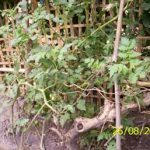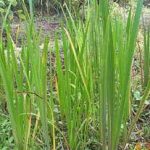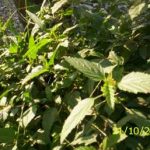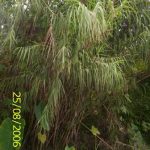Common Name
English :Flame of the forest
Hindi :Dhak/Palas
Manipuri :Pang-gong
Scientific Name
Group :Angiosperm (Dicotyledon)
Family :Fabaceae
Genus :Butea
Species :monosperma (Lam.) Taub
Habit :Evergreen tree
Parts Used :Whole plant
Mode of Preparation :Root, bark and flower crushed for decoction.
Mode of use :Decoction, Fresh
Ingredients :Fresh seed contains proteolytic and lypholytic enzymes. Pangong oil yields 21.2% palmitic acid, 9.1% stearic acid, 27.9% oleic acid, 4.4% linolenic acid and 11.4% linoleic acid.
Ailment Treated:The decoction of root is used in night blindness, elephantiasis and other defects of eyes. Leaves are used for astringent, anodyne, aphrodisiac, pimples, boils, flatulence and haemorrhoids. Decoction of bark is used for fracture of bones, piles, dysentery, hydrocele, diabetes, ulcers, tumours and menstrual disorder. The ash of the tender branches is used in abdominal disorder. The gum is known as Bengalkino and Buteakino is astringent, constipating, depurative, diarrhorea and diabetes. Decoction of flower used for curing leprosy, gout and skin diseases. Seeds are pounded with lemon juice and act as a powerful rubifacient and used to cure for Herpes called Phobic’s itch.
Source:Wildly grown in hilly regions and foothills.






